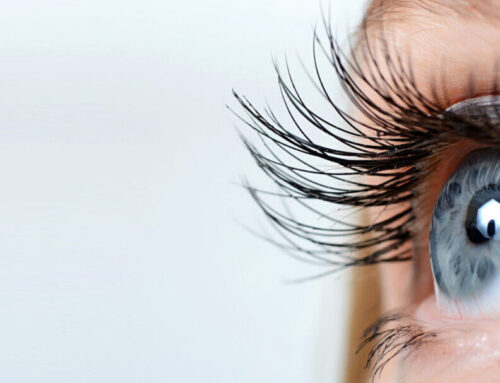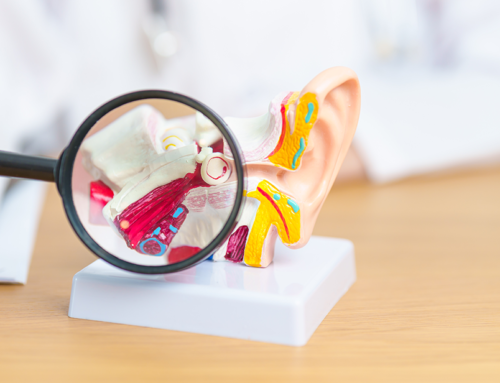Hearing rehabilitation: Gen therapy and optical CI
On the last day of the Austrian ENT Congress in September 2021 in Innsbruck, the focus was on the research and medium-term and distant future of hearing rehabilitation.

In 2013, Priv. Doz. DI DDr. Ingeborg Hochmair, founder of the Austrian implant manufacturer MED-EL, Prof. Dr. Blake S. Wilson, scientist at Duke University and Prof. Dr. Graeme M. Clark from the University of Melbourne received the Lasker-DeBakey Clinical Medical Research Award for the development of modern cochlear implants. As hearing implantology just celebrated its 30th anniversary in 2021, the Albert Lasker Basic Medical Research Award was presented to three scientists whose research could become significant for the future of cochlear implants. Those are Prof. Karl Deisseroth, M.D., Ph.D. at Stanford University in California, Prof. Peter Hegemann at Humboldt University in Berlin and Prof. Dieter Oesterhelt at the Max Planck Institute of Biochemistry, who researched light-sensitive protein microorganisms and their use in optogenetics. This protein is a prerequisite for the development of optical CIs, in which experts have high expectations.
At the ENT Congress, Prof. Dr. Stefan Volkenstein gave an overview of future developments in ear surgery, for which digitization and technologization are the driving forces. This also applies to hearing implants. For example, improved visualizations enable individually optimized cochlear implantations.
Prof. Volkenstein mentioned visions of the future with specific reference to CIs. Besides the dream of many CI users of a fully implanted system, the optical stimulation and genetic rehabilitation of hearing ability could make implants obsolete.
The genes for good hearing
In the case of acquired hearing loss (occurring later in life) due to non-genetic causes, the most advanced gene therapy is that which aims to directly regenerate the sensory cells of the ear. “Many studies show that this regeneration is possible,” Prof. Ellen Reisinger of the University Hospital of Tübingen explained in her presentation. “But so far, only one study shows that it also improves hearing. The problem is that this effect has not yet been reproduced.” Therefore, whether and when such a therapy might become possible is not yet foreseeable.
Early childhood hearing problems are 80 percent genetically caused, and more than 70 percent of these genetic variances affect hearing exclusively. But these genes are numerous: in case of the recessive variants, 78 different genes are known to be possible causes. A connection is suspected for at least another 23 genes, and other unknown causes are possible.
Promising approach to gene therapy
With this large number of different genes as a cause of hearing loss, there cannot be one gene therapy for hearing loss. In addition, such a therapy requires that not only hearing loss itself but also the respective gene causing it is clarified in each patient. In many cases, an early application of gene therapy is decisive for a successful therapy. For example, a special therapy approach showed promising results in experiments on mice, but with this therapy the deafness would have to be diagnosed in the womb. The underlying gene defect would have to be identified in the genetic material before the 18th week of pregnancy! “I don’t think that’s completely out of the question, but it’s as far away as Mars colonization,” speculates Prof. Reisinger, a specialist in gene therapy.
She herself investigates the development of a gene therapy that should help with a mutation that is present in two percent of all genetically caused hearing loss cases. Clinical trials are underway. Promising are those gene therapy developments that are a prerequisite for prosthetic treatments with future optical cochlear implants.
Improving sound perception with the CI
In the healthy inner ear, pitch is encoded by the location in the inner ear where the particular sound is stimulated. Cochlear implants stimulate as close as possible to the natural point of stimulation using an electrical current pulse and we refer to this as Ionic Stimulation. Only MED-EL CIs use the described time coding for low sounds as well.
Despite this, the weakness of modern cochlear implants is their relatively low frequency resolution compared to healthy ears. Sound differences cannot be perceived as well. This is due to the fact that the current pulses used also build up their electric field around the active contact, thus co-exciting the neighboring areas. “Because of this, it makes no difference whether they use 12 or 24 channels,” explained Prof. Dr. Tobias Moser, director of the Institute for Audiological Neuroscience at the Medical University of Göttingen. “This is where the optical CI comes into play, because you can bundle well with it.” We hope for 64 channels.
Optical cochlear implants
The human nerve impulse is naturally an ionic impulse, which makes an electronic stimulation impulse a good match. In contrast, the cells of the green alga are light-sensitive. “The trick is to extend such a genetic information from the green alga and bring it into the human nerve cell,” Prof. Moser explained. Deisseroth, Hegemann and Oesterhelt, scientists who recently won the Lasker Award for basic research, have tried to do that in mice. Both objective ABR measurements and behavioral analysis experiments showed that auditory impressions could be achieved.
“We are in the middle of development, but we still have a lot of work to do!” Prof. Moser said, referring to gene therapy and medical technology with optical stimulation modules and appropriate coding strategies.






